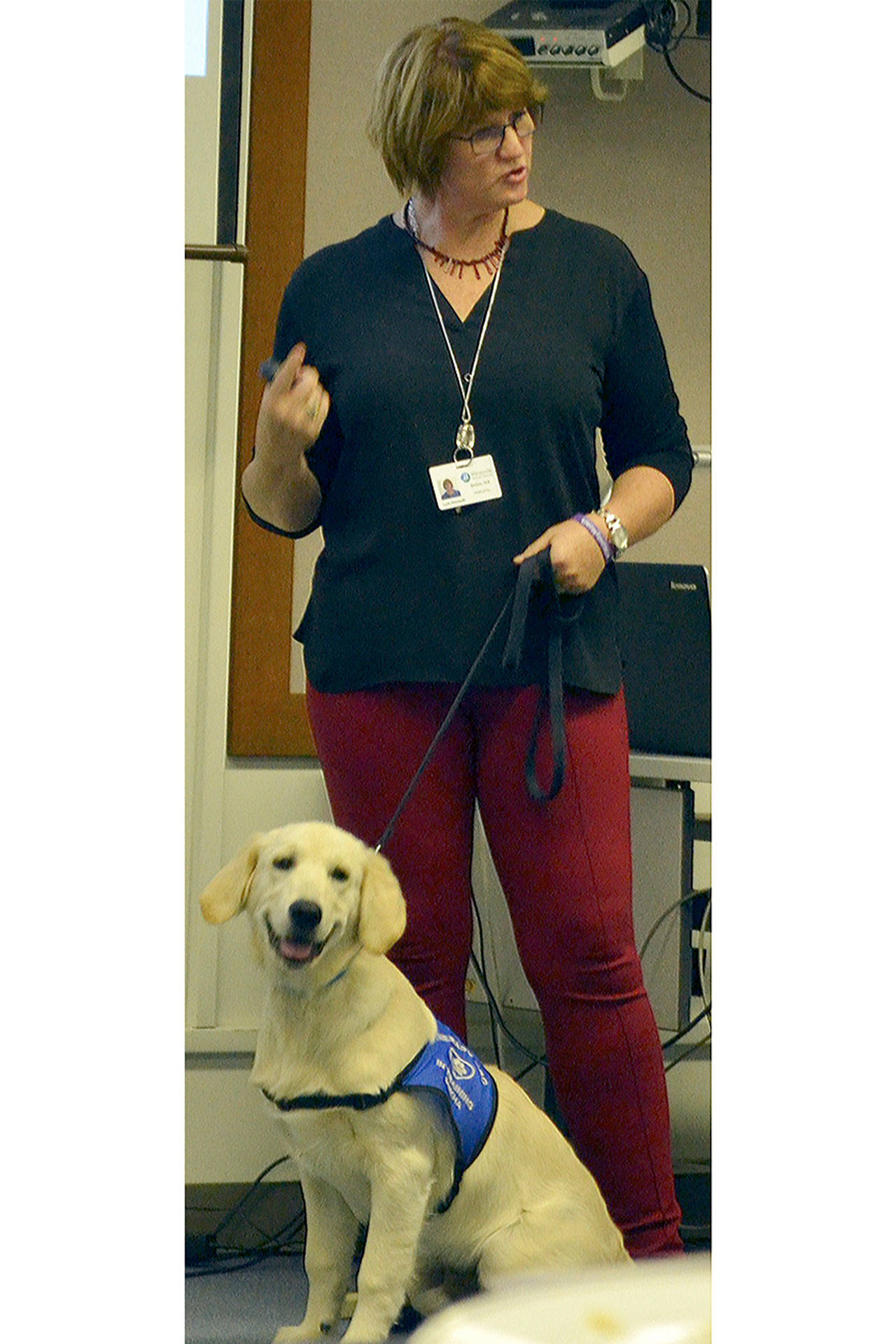By Steve Powell
spowell@marysvilleglobe.com
MARYSVILLE – Former Shoultes Elementary School principal Lynn Heimsoth was beloved by students and peers alike.
And she helped initiate some programs still being used in the Marysville School District today.
On the first day of school in 2015, Heimsoth, who was at Shoultes for four years, was giving out hugs to dozens of students. “Hugs, that’s what I do,” she told The Marysville Globe.
To students who shyly were trying to avoid her, she joked, “They know better than that.” Heimsoth, 58, who had moved on to a school in Bellingham where she lived in 2017, was shot to death Dec. 26 along with her pets. The suspect, her husband, Kevin Heimsoth, 56, suffered a self-inflicted gunshot wound and was taken to a hospital in critical condition.
“We are heartbroken by this news,” Bellingham Public Schools Superintendent Greg Baker told The Bellingham Herald. “Lynn was a passionate, equity-driven instructional leader. She loved kids to the core and always kept students’ needs at the center of her work.”
Whatcom County deputies responded to a report of a murder-suicide at the Chartwell Estates on Marine Drive at about 10:30 a.m. They found Heimsoth, her husband and Heimsoth’s therapy dog, Sukha, and a cat both dead from gunshot wounds. The therapy dog was always by Heimsoth’s side, Baker’s statement said.
On that first day of school in 2015, Heimsoth welcomed new assistant principal Jessica Conte, who worked with therapy dog Zenith to help students emotionally at Shoultes. “Kids have behavior and emotional needs dogs can relate to in a way we can’t,” Heimsoth said at the time.
Changing demographics
Heimsoth was instrumental in helping the Marysville School District understand its changing demographics and changes that needed to take place to deal with that.
At a work session she said in the previous 15 years the number of white students dropped from 90% to 57% at Shoultes. She said free lunches increased from 35% to 60%. She explained the number of students receiving daily help from paraprofessionals went from 70 to 110. “Those with the most need are helped by the most qualified in the smallest groups,” she said. As a result of that attention, she said scores increased 74 percent.
Heimsoth was a major supporter of getting parents of minority students involved in school.
“We love to have our families come to our school for any reason,” said Heimsoth, who touted Shoultes’ monthly coffees for Hispanic families. “I want them to see this as their school.”
Of the roughly 40 Hispanic families invited to a pinata-making party, at least half attended.
Heimsoth said, “The more engaged those parents are, the better their students will do in school.”
Attendance woes
Heimsoth also took measures to improve attendance.
One was called “Sharky.” The class that had the best attendance each month was awarded the huge stuffed shark.
The shark was also used to improve student behavior. After proper behavior was taught to students, they received “Sharky Slips” for repeating those behaviors. Heimsoth said using Facebook was helping the school communicate with parents, along with social media like Twitter and Instagram. The school also had breakfast with parents of those who had good attendance, along with monthly award certificates, assemblies and a Wall of Fame. Those with too many unexcused absences got home visits.
“Kids from Mexico took extended vacations to be with family,” Heimsoth said of one of the issues they were dealing with.
Community, technology
Heimsoth also worked with the community. Members of the Unchained Brotherhood motorcycle club raised $400 for the school with a 120-mile ride. “We’re so grateful to this club,” she said. “Beyond the basic admission fee they paid to ride, they all donated a little something extra.”
She was also a proponent of technology.
When the school received some iPads, she said: “We want them to learn apps so that they become not just consumers, but creators. We have to get them ready for a global economic environment that’s far different from what we knew when we were growing up.”
Safety
She also was part of the smart phone app called the Rave Panic Button pilot program. The button communicates an emergency within seconds to 9-1-1, on-site personnel, staff and security.
When someone initiates a panic call, everyone in the building is notified where the emergency is. That way teachers can keep students away from any danger. Lockdowns, evacuations and other emergency procedures are then done with more knowledge about what’s going on.
Heimsoth said she likes the system because there can be a lot of misinformation going around during a crisis.
She was recognized for her outstanding effort to keep her school and students safe during a crisis. “Principal Heimsoth’s quick response and innovative use of the Staff Assist feature kept students and staff safe and informed until the lockdown was lifted and buses continued their routes,” said Graeme Kennedy, MSD security coordinator at the time.



